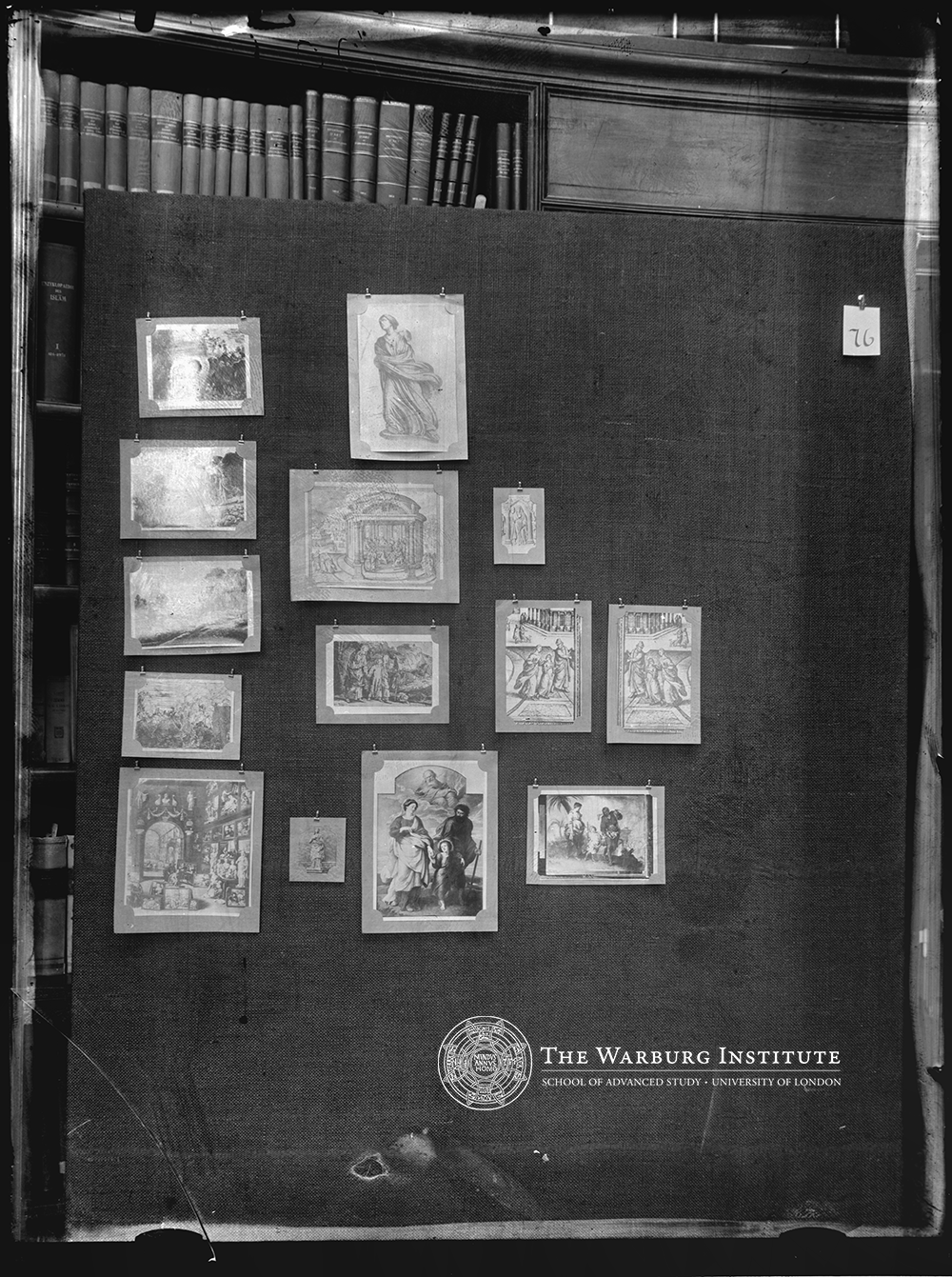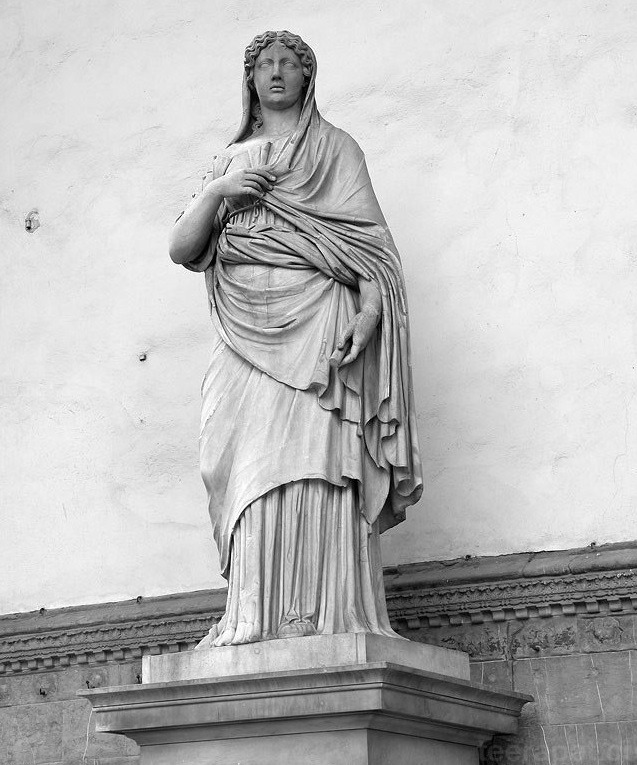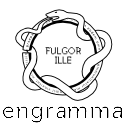Mnemosyne Atlas 76
Niobe barocca: deduzione formale e riemersione engrammatica
La formula gestuale della “protezione del bambino in pericolo” nell’arte sacra barocca: nella figura dell’adulto in movimento (copie-varianti da Tobiolo e l’Angelo di Elsheimer fino al Riposo durante la fuga in Egitto di Rembrandt; tema del Ritorno di Gesù a casa dal Tempio) riverberano anche antichi modelli formali della figura materna (Niobe – la madre indifesa che protegge – in Pieter van der Borcht; la ‘figura ammantata’-vestale della Loggia dei Lanzi in Rembrandt).
Baroque Niobe: formal inference and engrammatic re-emergence
The gestural formula of ‘protecting a child in danger’ in Baroque religious art: in the figure of the ‘guardian’ in motion (copies or variants after Elsheimer’s Tobias and the Angel, and Rembrandt’s Rest during the flight into Egypt; the subject of Jesus on the way back from the Temple) ancient models of the ‘Mother’ resound (Niobe, the defenseless mother that protects her children, in Pieter van der Borcht; the mantled Vestal of the Loggia dei Lanzi in Florence, in Rembrandt).

Appunti di Aby Warburg (1929)
Rückkehr nach Nazareth
Ritorno a Nazareth.
Appunti di Aby Warburg e collaboratori (1929)
Schutz des gefährdeten Kindes: Tobiuzzolo und Ruhe auf der Flucht = Elsheimer – R’dt. Heimkehr vom Tempel. Mutter als Niobe (Pieter v.d. Borcht) und als Gewandfigur (R’dt.). Hilflos schützende Mutter.
Protezione del bambino in pericolo: Tobiolo e il Riposo durante la fuga = Elsheimer – Rembrandt. Ritorno a casa dal Tempio. Madre come Niobe (Pieter van der Borcht) e come figura panneggiata (Rembrandt). Madre indifesa che offre protezione.
Appunti di Gertrud Bing (1940 ca)
Das Tobias-Motiv wird zur Heim – Kehr aus der Tempel. Elsheimer – R’dt. Antike noch wirksam bei Rdt’s Vorläufer (Pieter v.d. Borch?) – Niobe = Klagende Mutter. Auch bei Rubens Antike – Junofigur. Die Augensprache schon bei P.v.d.B. – bei R’dt aber einziges Mittel, ohne rhetorische Gewandbewegung.
Il motivo di Tobia diventa verso la casa – Ritorno dal tempio. Elsheimer – Rembrandt. L’Antico è ancora efficace nel precursore di Rembrandt (Pieter van der Borcht?) – Niobe = madre in lutto. L’Antico è anche in Rubens – Figura di Giunone. Il linguaggio dello sguardo in Pieter van der Borch – ma in Rembrandt è il solo mezzo, senza il linguaggio retorico delle vesti fluttuanti.
Letture di approfondimento
Notes by Aby Warburg (1929)
Rückkehr nach Nazareth
Return to Nazareth.
Notes by Aby Warburg and coll. (1929)
Schutz des gefährdeten Kindes: Tobiuzzolo und Ruhe auf der Flucht = Elsheimer – R’dt. Heimkehr vom Tempel. Mutter als Niobe (Pieter v.d. Borcht) und als Gewandfigur (R’dt.). Hilflos schützende Mutter.
Protezione del bambino in pericolo: Tobiolo e il Riposo durante la fuga = Elsheimer – Rembrandt. Ritorno a casa dal Tempio. Madre come Niobe (Pieter van der Borcht) e come figura panneggiata (Rembrandt). Madre indifesa che offre protezione.
Notes by Gertrud Bing (ca. 1940)
Das Tobias-Motiv wird zur Heim – Kehr aus der Tempel. Elsheimer – R’dt. Antike noch wirksam bei Rdt’s Vorläufer (Pieter v.d. Borch?) – Niobe = Klagende Mutter. Auch bei Rubens Antike – Junofigur. Die Augensprache schon bei P.v.d.B. – bei R’dt aber einziges Mittel, ohne rhetorische Gewandbewegung.
Tobias’ motif becomes towards home – Return from the Temple. Elsheimer – Rembrandt. The Antique is still effective in Rembrandt’s forerunner (Pieter van der Borcht?) – Niobe = grieving mother. The Ancient is also in Rubens – Juno figure. The language of the gaze in Pieter van der Borch – but in Rembrandt it is the only mean, without the rhetorical language of the moving clothes.
Further Readings

1. Hendrick Goudt (da Adam Elsheimer), Tobia e l'angelo, acquaforte su rame, 1613.
2. Niobide, dal gruppo fiorentino dei Niobidi, copia romana da un modello greco del tardo IV sec.a.C., I sec. a.C. (Firenze, Galleria degli Uffizi), illustrazione da Johanne Baptista de Cavalleriis, Antiquarum statuarum urbis Romae liber tertius et quartus, Roma 1594, tav. 19.
3. Hercules Seghers (da Hendrick Goudt e Adam Elsheimer), Tobia e l'angelo, acquaforte, post 1613.
4. Pieter van der Borcht, Gesù tra i dottori, illustrazione da Hendrick Jansen Barrefelt, Imagines et figurae Bibliorum, apparso col nome di Jacobus Villanus (= Christoffel Plantijn), Leida 1580-8.
5. Ecclesia, disegno di un frammento da un sarcofago del sec. IV d.C., Perugia, San Bernardino, altare maggiore, già tomba di Sant'Egidio.
6. La fuga in Egitto, lastra per l'acquaforte Tobia e l'angelo di Hercules Seghers rielaborata da Rembrandt, 1653 ca.
7. Rembrandt, Gesù accompagnato dai genitori fa ritorno dal tempio, acquaforte, 1654.
8. Pieter van der Borcht, Gesù torna dal tempio coi suoi genitori (particolare rovesciato da fig. 4).
9. Pieter van der Borcht, Gesù torna dal tempio coi suoi genitori (particolare da fig. 4).
10. Bartholomäus Breenbergh, Paesaggio fluviale, acquaforte su rame, 1639.
11. Willem van Haecht, Alessandro Magno nell'atelier di Apelle, dipinto (a sinistra, la Vestale della Loggia dei Lanzi), 1628, Den Haag, Mauritshuis.
12. Vestale (sacerdotessa, Sabina), copia romana in marmo da un originale greco del tardo sec. IV a.C., 100-130 d.C., Firenze, Loggia dei Lanzi.
13. Pittore fiammingo, Ritorno della sacra famiglia dall'Egitto, dipinto, 1620 ca., New York, Metropolitan Museum of Art.
14. La sacra famiglia torna dall'Egitto, copia di F.J. Kaufmann da un dipinto di Januarius Zich (Koblenz, collezione privata) dipinto a olio, 1791, Mainz, Mittelrheinisches Museum.


1. Hendrick Goudt (da Adam Elsheimer), Tobia e l'angelo, acquaforte su rame, 1613.
1. Not translated

2. Niobide, dal gruppo fiorentino dei Niobidi, copia romana da un modello greco del tardo IV sec.a.C., I sec. a.C. (Firenze, Galleria degli Uffizi), illustrazione da Johanne Baptista de Cavalleriis, Antiquarum statuarum urbis Romae liber tertius et quartus, Roma 1594, tav. 19.
2. Not translated

3. Hercules Seghers (da Hendrick Goudt e Adam Elsheimer), Tobia e l'angelo, acquaforte, post 1613.
3. Not translated

4. Pieter van der Borcht, Gesù tra i dottori, illustrazione da Hendrick Jansen Barrefelt, Imagines et figurae Bibliorum, apparso col nome di Jacobus Villanus (= Christoffel Plantijn), Leida 1580-8.
4. Not translated

5. Ecclesia, disegno di un frammento da un sarcofago del sec. IV d.C., Perugia, San Bernardino, altare maggiore, già tomba di Sant'Egidio.
5. Not translated

6. La fuga in Egitto, lastra per l'acquaforte Tobia e l'angelo di Hercules Seghers rielaborata da Rembrandt, 1653 ca.
6. Not translated

7. Rembrandt, Gesù accompagnato dai genitori fa ritorno dal tempio, acquaforte, 1654.
7. Not translated

8. Pieter van der Borcht, Gesù torna dal tempio coi suoi genitori (particolare rovesciato da fig. 4).
8. Not translated

9. Pieter van der Borcht, Gesù torna dal tempio coi suoi genitori (particolare da fig. 4).
9. Not translated

10. Bartholomäus Breenbergh, Paesaggio fluviale, acquaforte su rame, 1639.
10. Not translated

11. Willem van Haecht, Alessandro Magno nell'atelier di Apelle, dipinto (a sinistra, la Vestale della Loggia dei Lanzi), 1628, Den Haag, Mauritshuis.
11. Not translated

12. Vestale (Sacerdotessa, Sabina), copia romana in marmo da un originale greco del tardo sec. IV a.C., 100-130 d.C., Firenze, Loggia dei Lanzi.
12. Not translated

13. Pittore fiammingo, Ritorno della sacra famiglia dall'Egitto, dipinto, 1620 ca., New York, Metropolitan Museum of Art.
13. Not translated

14. La sacra famiglia torna dall'Egitto, copia di F.J. Kaufmann da un dipinto di Januarius Zich (Koblenz, collezione privata) dipinto a olio, 1791, Mainz, Mittelrheinisches Museum.
14. Not translated

